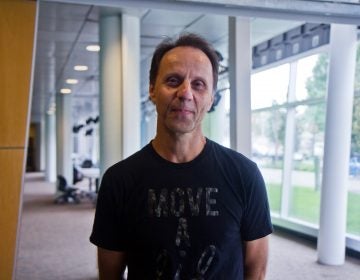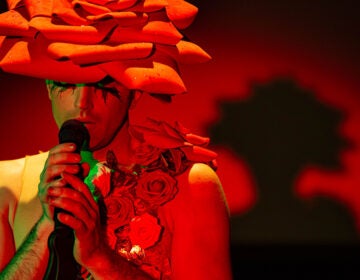Northeast Philly sets the stage ‘on the fringe of the Fringe’
Formerly an arts desert, Philadelphia’s Mayfair neighborhood is expanding its cultural footprint for the Fringe Festival.
Listen 3:50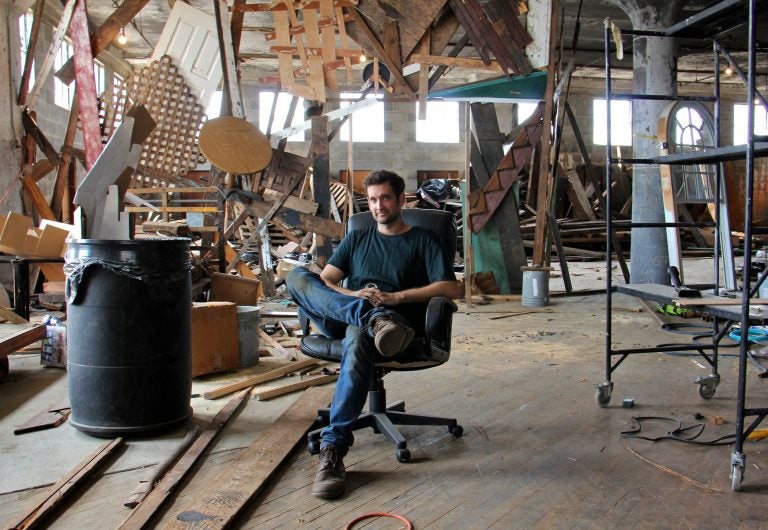
John Cambridge built the set for the fringe show "Much to Do Much to Fix" using only recycled materials. The venue is the top floor of a 100 year old warehouse in Tacony. (Emma Lee/WHYY)
The annual Philadelphia Fringe Festival starts this week with almost 200 small, medium, and large-scale theater productions.
The festival is centered in Old City, where FringeArts has its building on the waterfront. The huge roster of mostly small, self-produced plays will be performed in spaces all over the city.
Three neighborhoods in the Northeast are using the Fringe to establish an arts presence where there had not been one before.
Up until a few years ago, Mayfair had no venues for art. The neighborhood was not alone: like it’s neighbors Holmesburg and Tacony, the farther from Center City you go, the less likely a neighborhood will have a place to see art, or watch theater, or take an art class.
That has been changing.
“The Northeast is a different world from Center City or West Philly,” said John Cambridge while building a theater set in Tacony. “This is an awesome area that’s fun to do stuff in.”
Cambridge, an entomologist, was hired a few years ago to lead the overhaul of the Insectarium, a bug museum in Holmesburg that underwent a chrysalis-like transformation. Since then he has been bitten by the theater bug.
Cambridge has not only hosted artists in the Insectarium’s butterfly pavilion, but has thrown his own creative hat into the Fringe Festival with an original play, “Much To Do, Much To Fix.”
The title could act as a shorthand description Cambridge’s life. For the last four months he has spent every minute of his spare time building a massive theater set in an old brick manufacturing building on the Tacony waterfront, sandwiched between an automobile junkyard and a strip club.
The 10,000 square foot set is in the round, with the audience seated on a swiveling riser in the center. The seating spins 360 degrees on a giant, motorized lazy susan as gods and mortals perform the play along the outer ring.
The script, Cambridge’s first stab at writing for theater, is a cautionary tale about the environmental damage of energy production. A cast of immortal gods react to decisions made by mortals on Earth.
The entire set, including the rotating seating, is built by hand out of lumber reclaimed from demolished rowhomes.
“Part of the story is the creation of the set,” said Cambridge. “Built entirely from recycled materials.”
He is diving into theater headfirst. Last spring Cambridge launched a theater company, Wings of Paper, as the resident company of a new storefront theater a mile away, in Mayfair.
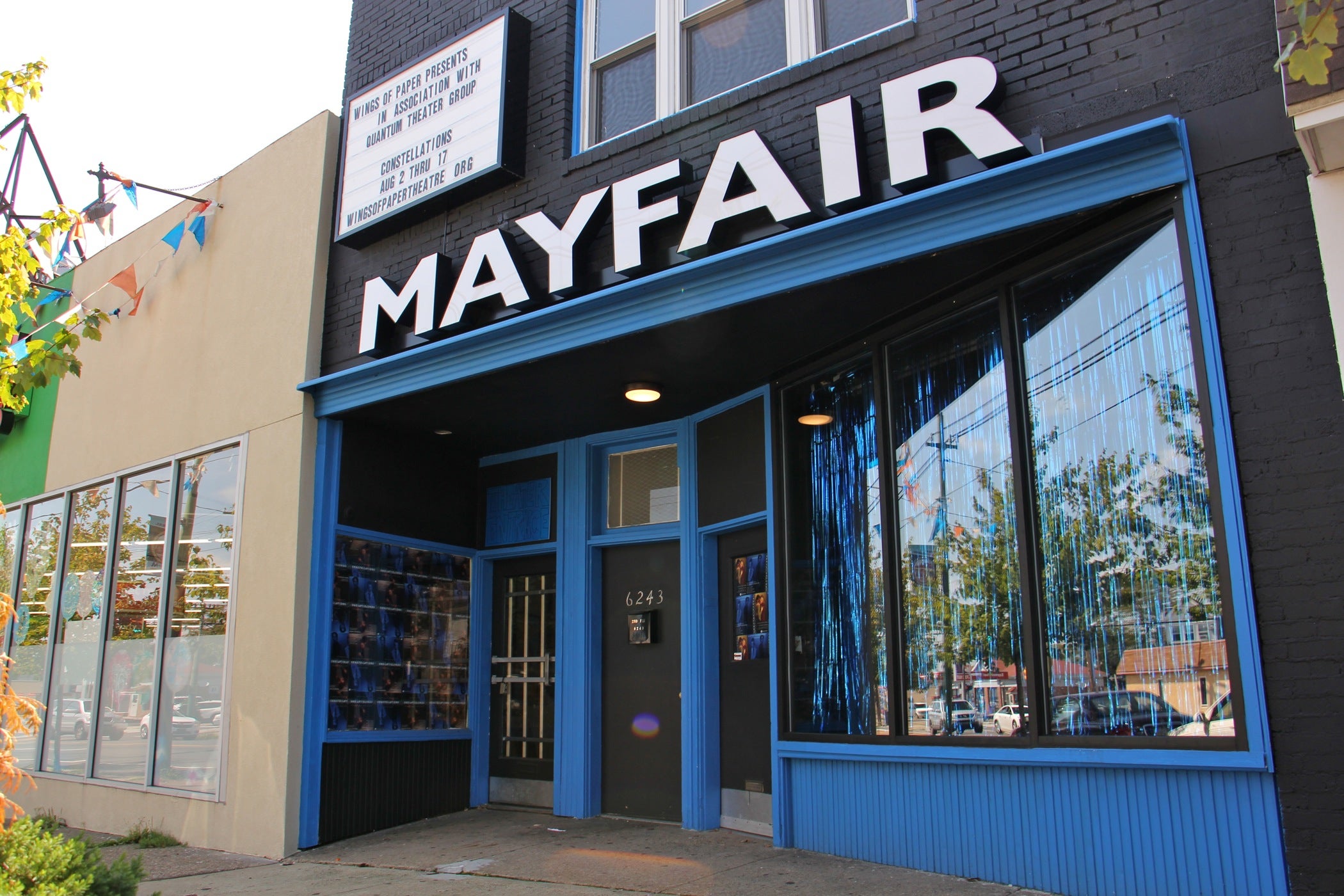
“We created the Mayfair Theater to try to figure out how to do theater,” said Cambridge. “Which is super-duper complex and really, really fun.”
The Mayfair Theater used to be a school uniform shop on Frankford Avenue, between a dollar store and a pizza shop. It sat empty until it was recently bought by Mike “Scoats” Scotese, the owner of the Grey Lodge Pub a few doors down the block.
The space is bisected into two large rooms. Scotese has plans to turn half of it into a microbrewery. The other half he rented out to the Mayfair Business Improvement District (BID), to build into a black-box theater, a large room painted black that can seat about 50 people in folding chairs.
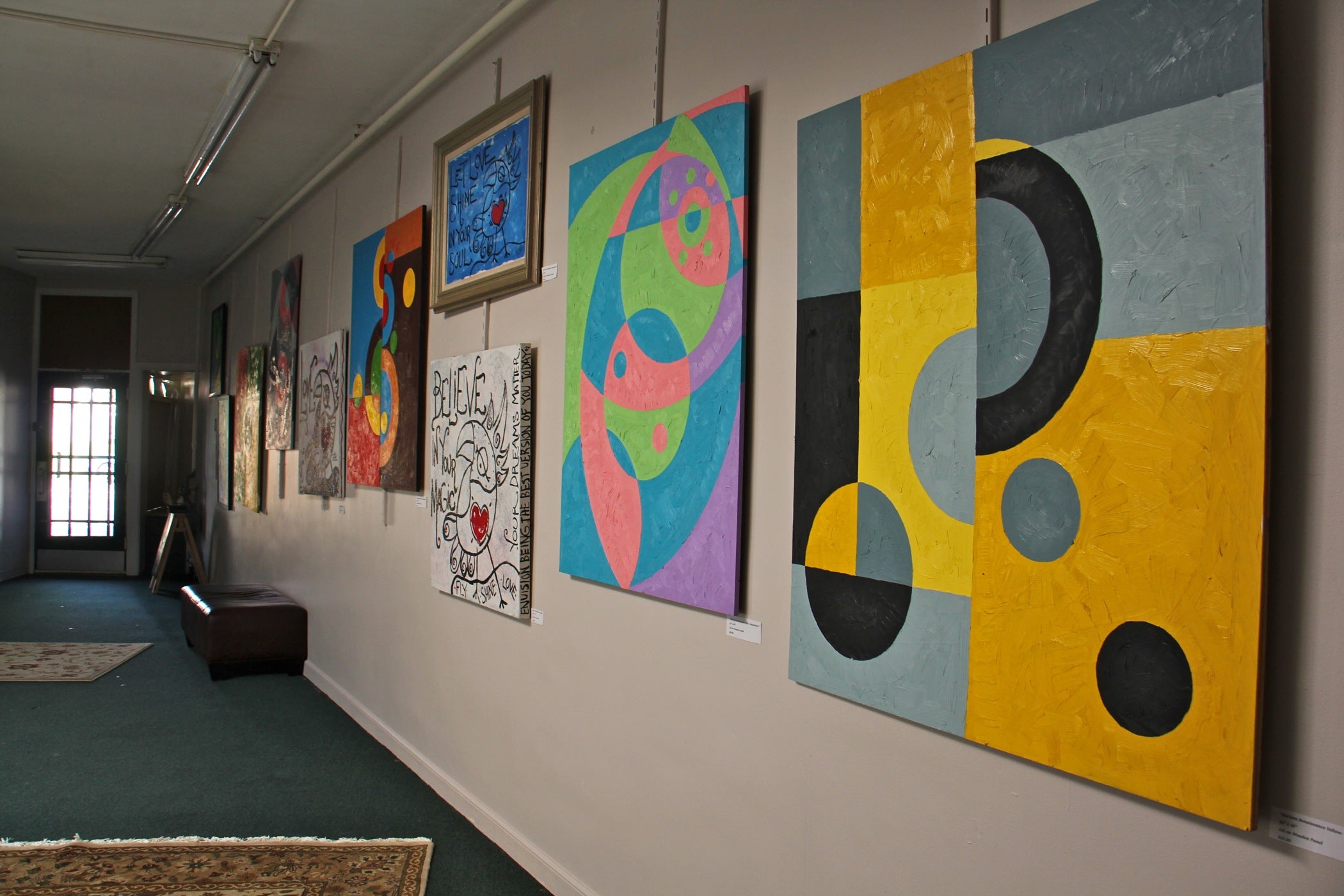
“Having something cool going on on the block, it definitely helps the neighborhood and that benefits us,” he said.
Marc Collazzo, the executive director of the BID, shares his belief that the arts can be an economic driver for the commercial corridor.
“Now there’s a space where people can come to. We want this to be an Avenue of the Arts in Northeast Philadelphia,” said Collazzo. “People don’t want to get in their cars and get on 95.”
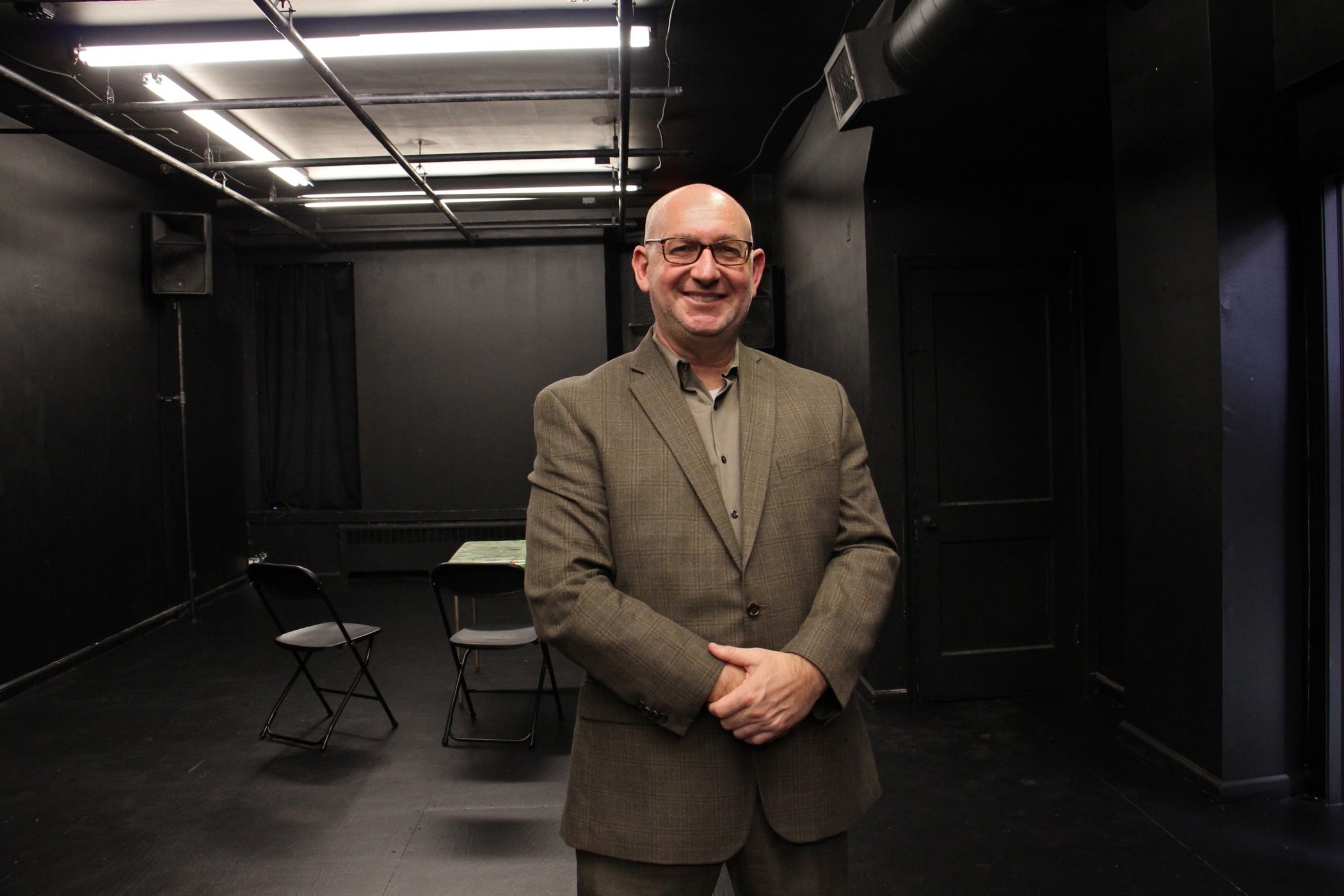
For more than 25 years Scotese has run the Grey Lodge Pub with an artist’s imagination, installing his own tile mosaics through the bar and occasionally inviting artists to show their work. Down the street, the flower shop Stein’s Your Florist has likewise maintained an informal arts presence in the neighborhood.
For the longest time they had the only reliable arts presence in the neighborhood.
Then, three years ago, the Tacony branch of the Free Library temporarily closed for extensive renovations. Mural Arts Philadelphia opened a small library and community arts center, the Tacony LAB, as a stop-gap. The art center proved valuable to the neighborhood and now thrives even after the public library reopened.
Two years ago, Cambridge opened the Butterfly Pavilion at his Insectarium in Holmesburg and opened it up to be used by local performance artists.
Around the same time, the Mayfair BID shut down the Frankford Avenue retail corridor for a day and opened a street arts festival.
“We weren’t sure who was going to come. Everything is sort of new here. We’re on the fringe of the Fringe,” said Collazzo. “I remember going to the podium – this was in April of 2018 at quarter of 12:00, we were going to start at noon — and there were hundreds of people out there waiting to go.”
This year, in March, Collazzo and the Mayfair BID opened the Mayfair theater to be the newest arts draw of the neighborhood.
The Mayfair Theater is a block away from the former Devon Theater, a historic venue built in the 1940s that could seat almost 1,000. After a rocky period (it briefly operated as a porn house) it closed in 2000.
The Devon underwent a multi-million dollar renovations and reopened in 2009 as a state-of-the-art performance center, but did not prove to be sustainable. After a single season it closed again. It’s now operated as a church.
In the wake of the Devon rose the Mayfair Theater, a stone’s throw away. Collazzo said the success of the much smaller storefront theater rests on Cambridge and his Wings of Paper company to maintain a busy performance schedule.
“John and I always had the goal to do something for Fringe,” he said. “It really is the center of the theatrical community in Philadelphia.”
For the Fringe Festival, the Mayfair is hosting a double-bill performance, “Arytone” (by Michael Stahler) and “Fixed” (by Alice Hakvaag). The two local playwrights will be directing each other’s plays.
Later this fall, Collazzo plans to shut down Frankford Avenue for “Outfest,” Mayfair’s first LGBTQ street festival.
WHYY is your source for fact-based, in-depth journalism and information. As a nonprofit organization, we rely on financial support from readers like you. Please give today.




